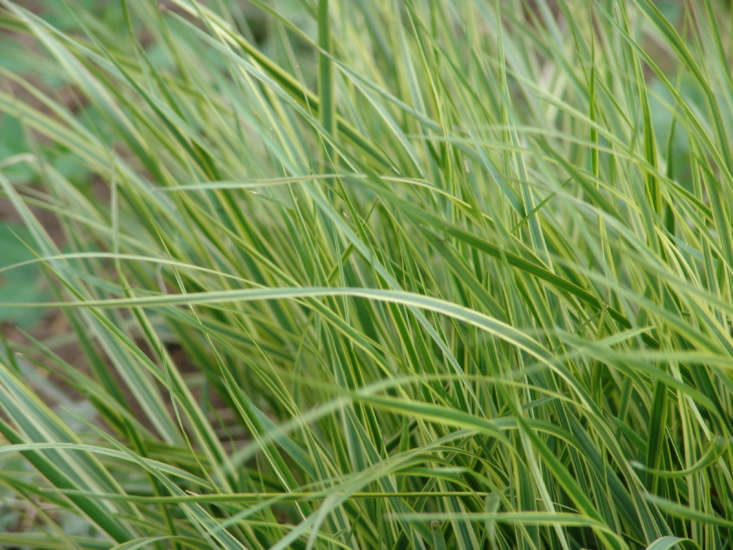Feather Reed Grass, Calamagrostis
A connoisseur of ornamental grasses may be able to identify a particular species at a glance. But I need a cheat sheet to tell feather reed grass (Calamagrostis) and many other perennial grasses apart.
It doesn’t help matters that some Stipa grasses also are called feather grasses or that Miscanthus has feathery plumes of its own. Or that depending on the variety, feather reed grass either can grow in clumps or not in the landscape. So what sets feather reed grass apart?
The answer may lie in the characteristics of Calamagrostis x acutiflora ‘Karl Foerster’, the most widely admired of all the many species (of which there are more than 250), cultivars, and hybrids in this plant family. Awarded plant of the year in 2001 by the Perennial Plant Association, ‘Karl Foerster’ was named for a German plant breeder whose career started in the late 19th century and spanned much of the 20th (he died at age 96 in 1970). This feather reed grass, which grows in clumps that can reach heights of up to 5 feet when it’s in bloom has thin wands of foliage topped by airy pink flowers that turn a beautiful shade of lion’s-mane gold in late summer.
Is ‘Karl Foerster’ (or another Calamagrostis) the right plant for your garden? Read on to learn more.

“This ornamental grass provides movement in the border. The softest breeze sets it into perpetual motion. In early June the inflorescences appear atop the lush green foliage,” noted the Perennial Plant Association in awarding ‘Karl Foerster’ its top honor. ” The flowers are first light pink and later turn golden tan. Even in winter snows and frost, this grass remains ornamental.”
Other species of Calamagrostis also are easy to grow and add texture and interest to a landscape.

C. stricta does not get quite as tall as ‘Karl Foerster’ and it spreads in a garden (rather than growing in clumps). Hardy in USDA growing zones 3 and warmer, it prefers full sun and damp soil (it’s a favorite for wetlands gardens).

Grasses, when interplanted, can create a lovely tapestry of undulating textures against a fence or on a slope.

Perennial in USDA zones 4 to 9, ‘Overdam’ also prefers a sunny location.
Cheat Sheet
- For companion plants, consider the sorts of wildflower perennials that grow well on a prairie: black-eyed Susan, veronica, and coneflower mix well with feather reed grasses.
- Leave dried flowers in place until the end of January to add structure to a winter garden; cut back to encourage early spring growth.
- Dutch garden designer Piet Oudolf planted clumps of C. x acutiflora ‘Karl Foerster’ in his own garden to create a strong vertical plane. See more of his garden in 10 Garden Ideas to Steal from Superstar Dutch Designer Piet Oudolf.

Keep It Alive
- Plant ornamental grasses in well-drained soil after tilling it to remove weeds (which are trickier to eliminate after grasses become established and provide camouflage for them).
- Calamagrostis prefers damp soil, making it a good choice at the edge of a natural swimming pool, on the banks of a pond, or in a boggy corner of a backyard.
- In late winter, cut back last year’s growth to a height of six inches.

See more growing tips in Feather Reed Grass: A Field Guide to Planting, Care & Design in our curated design guides to Grasses 101. Read more:
- Expert Advice: 8 Tips for a Meadow Garden from Grass Guru John Greenlee
- Pink Grasses: 11 Ideas for Muhlenbergia in a Landscape
- Fountain Grass: A Field Guide to Planting, Care & Design









Have a Question or Comment About This Post?
Join the conversation